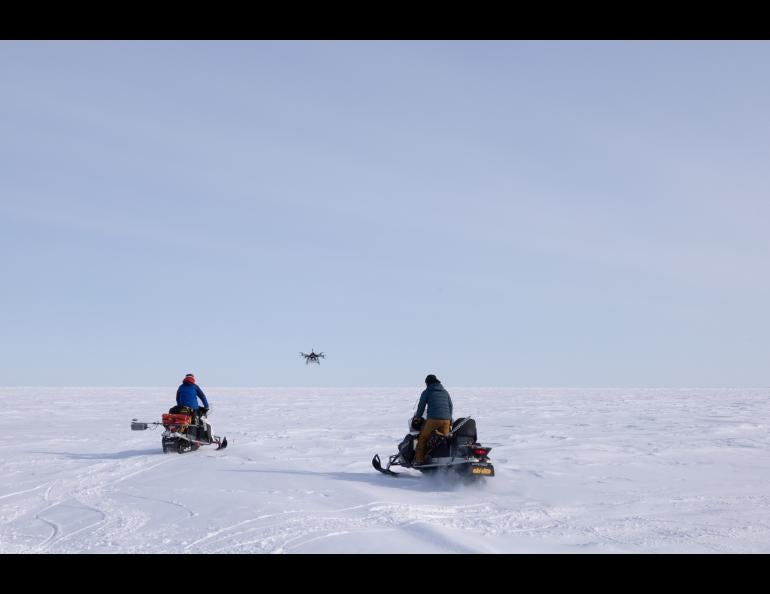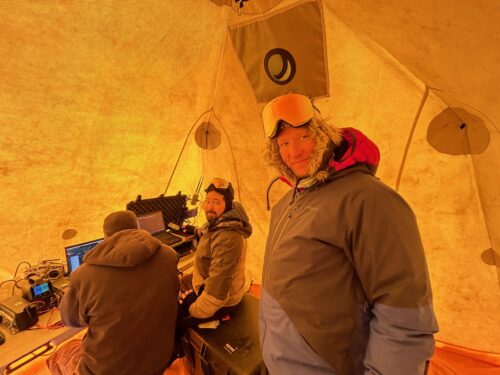
The University of Alaska Fairbanks recently published an article highlighting the collaborative research between their university and Boise State.
The article describes how Boise State’s HP Marshall, associate professor of geophysics, and graduate research assistant Thomas Van Der Weide worked with University of Alaska Fairbanks Geophysical Institute Research Professor Andy Mahoney and his team to use drones to collect data for the National Science Foundation supported Lightweight Airborne Snow and Sea Ice Thickness Observing System project.
An excerpt from the article reads: “The train of 10 snowmachines snaked slowly across the snow-covered sea ice toward the small tent far ahead, a single drop of yellow paint on a textured white canvas whose edges couldn’t be seen.

The collection of University of Alaska Fairbanks scientists and technicians and participants from Boise State University drove in single file past driftwood and whale rib bones poking upward through the frozen Beaufort Sea’s near-shore reaches.
This place, just a few miles from the northernmost U.S. city of Utqiagvik, is where the remains of subsistence-harvested whales are brought to keep scavenging polar bears from town. These are the lands and waters of the Inupiat people.
The weather was good on this mid-April Wednesday morning just beyond the northernmost tip of the United States, with scant wind and thin wisps of cirrus clouds strung across a nearly empty blue sky. The sun, which rose at 5:56 a.m., had been up for two hours.
A near-perfect day for science. For now.”